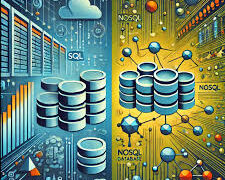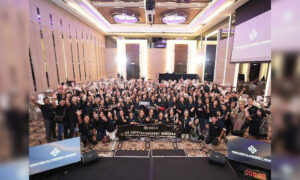A comprehensive review by technology researcher Suresh Vakkalanka, published in the International Journal of Scientific Research in Computer Science, Engineering and Information Technology, explores the rapidly evolving landscape of Mixed Reality (MR) operating systems and their potential to revolutionize human-computer interaction.
The Rise of Immersive Computing
Mixed Reality technology has emerged as a transformative force, seamlessly blending physical and digital worlds to create immersive environments where virtual and real objects coexist and interact in real-time. As these systems grow more sophisticated, they’re reshaping how we work, learn, and interact with digital content across industries.
Breaking Down Barriers with AI Integration
The integration of artificial intelligence is revolutionizing how MR systems understand and respond to their environment. Advanced machine learning algorithms are enabling more accurate spatial mapping and adaptive user interactions. These AI-powered systems can recognize objects, predict user behavior, and optimize performance in real-time, creating more intuitive and responsive mixed reality experiences.
New Frontiers in User Interaction
Recent innovations in gesture recognition and multimodal input systems are transforming how users engage with mixed reality environments. Modern MR platforms now incorporate sophisticated hand movement detection, voice commands, and eye-tracking capabilities. This multi-layered approach to user input, combined with haptic feedback systems, is creating more natural and immersive interactions. According to user interaction data from 2024, gesture control leads user preferences at 35%, followed by voice commands at 25%, while brain-computer interfaces remain in early adoption at 5%.
Healthcare and Education Lead the Way
The impact of MR operating systems is particularly pronounced in healthcare and education sectors. Medical professionals can now utilize real-time 3D visualization for surgical planning and execution, while educators are implementing immersive learning experiences that blend physical and digital educational content. These applications demonstrate the technology’s potential to transform professional training and skill development.
Addressing Technical Challenges
Despite rapid advancement, MR operating systems face several technical hurdles. Key challenges include ensuring interoperability across different platforms, managing increasing application complexity, and maintaining high performance while minimizing latency. Industry efforts are focused on developing standardized frameworks and implementing edge computing solutions to address these issues.
Privacy and Ethics in the Mixed Reality Era
As MR technology becomes more pervasive, important questions about privacy and ethical implications are emerging. The collection and storage of environmental data, potential surveillance concerns, and the psychological impacts of prolonged immersion in mixed reality environments are critical considerations shaping the development of these systems.
Looking to the Future
The future of MR operating systems points toward more sophisticated integration with artificial intelligence, advanced user interaction paradigms, and emerging technologies. These developments promise to unlock new possibilities across various industries while presenting both opportunities and challenges for society at large.
Economic Impact and Industry Growth
Market projections indicate substantial growth in MR applications across key sectors. The entertainment sector is expected to reach $110 billion by 2025, followed by healthcare at $85 billion and manufacturing at $82 billion. This growth trajectory underscores the technology’s increasing economic significance and widespread adoption.
The Human Element
As these systems evolve, the focus remains on creating user-centric experiences that enhance rather than replace human capabilities. Adaptive interfaces, improved ergonomics, and natural interaction systems are being developed to ensure that MR technology serves human needs effectively and intuitively.
Bridging Digital Divides
The widespread adoption of MR technology raises important questions about digital equity and accessibility. As these systems become more integral to daily life, ensuring equal access and preventing technological disparities becomes increasingly important.
As Suresh Vakkalanka concludes in his review, the continued development of robust, efficient, and user-centric MR operating systems will play a pivotal role in shaping the future of human-computer interaction. The technology stands poised to transform not just how we interact with digital content, but how we perceive and engage with the world around us.the evolution of Mixed Reality operating systems represents a significant leap forward in computing technology, offering new possibilities for human-computer interaction while raising important questions about privacy, accessibility, and social impact. As these systems continue to mature, their influence on society and industry will likely grow, making them an increasingly important part of our digital future.





























